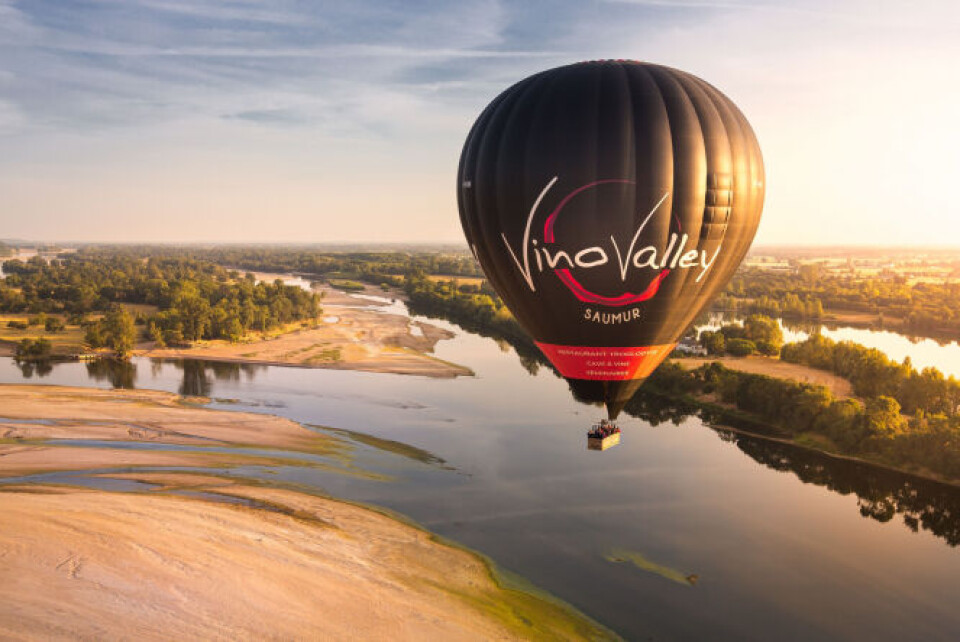-
'I helped restore French cathedrals as a female American stone cutter - despite prejudice'
Stella Cheng, who worked on the restoration of Notre-Dame Cathedral, faced sexism and racism
-
French woman named one of world’s best teachers
Céline Haller, inspired by English and US teaching methods, has gained recognition for revolutionising learning with hands-on projects and inclusivity
-
What does a maître cirier do in France?
Exploring an ancient craft form at a company founded 120 years ago
Meet the woman flying the biggest Montgolfières in France
Caroline Moulin-Habert is chief pilot for Montgolfière Sensation, flying over an area covering the west of France and Auvergne-Rhône-Alpes

How did you get started in ballooning?
It was pure chance. I used to be an accountant until I saw a hot air balloon for the first time in 2005 when I was 28.
The pilot was a woman and I learnt from her. She helped me discover hot-air ballooning in the most passionate way possible. We went to competitions and meetings and I met lots of people in the ballooning world.
Luckily, I had put money aside which I used to study for a piloting licence.
Then I started my own company, which I ran for six years, and now I am chief pilot for the company I used to be in competition with.
What is it like flying in a hot air balloon?
It is very calm, very Zen. You are cut off from the world both physically and mentally, floating in a bubble. It is quiet and you have time to look around you with a 360° view.

I don’t know any other form of transport which allows you to appreciate the surrounding countryside in such a peaceful way. There really is no other experience like it.
Are they difficult to fly?
It is not too difficult to learn, but preparation is really important to make sure you are flying in the best conditions.
Now I am an instructor and we spend a great deal of time teaching pupils about the weather. You have to be sure there won’t be any dangerous phenomena during a flight so you have to be able to read the weather signs, which are often difficult to understand.
It is also very important to know your region and the way its own topology affects the air above it, because an expanse of water, mountains and valleys all make a difference.
How do you manage to control the balloon?
With the burners, which are extremely sophisticated nowadays, and are never in danger of breaking down, and by understanding the weather. You heat the air to get to the height you desire.
You could keep on going up and up, but we don’t because of lack of oxygen in the high altitudes.
Most of our flights are at around 300m. To go down, all you need to do is to stop heating, so the air cools down and you descend. You can also open vanes to allow air to escape from the balloon to make it go down faster.
How do you navigate?
You can of course only go in one direction, but our aim is not to get back to where we started from but to take passengers on a route to see as much as possible.
The air is like a millefeuille pastry with a different wind at each layer of altitude, so you have to find the right height for the wind you require. We often check the winds with a small balloon before we set off, to make sure the conditions match our forecasts. When we have tested the winds at different altitudes we know how to plan the most beautiful, and of course safest flight.
What are the ideal conditions for flying?
When there is very little wind near to the ground making it easy to blow up the balloon, but there is wind higher up to push the balloon along, and clear visibility. Flights last around 1h30 in which time, we travel, on average 15 kms.
Which are the hardest hot-air balloons to fly?
There are four groups, each one requiring different licences.
You start with the smallest ones. The largest ones are the most difficult to fly because they react much more slowly to the commands you give them. If you change the intensity of the burner in a “When I went up on my own in the balloon I could see the men watching me from the ground to see if I could do it small balloon with two passengers it reacts immediately.
With a big one you have to anticipate a great deal more.
Are there many women pilots?
There are quite a few of us. We make up about twenty or thirty per cent, but hardly any in the world who fly the big ones like me.
It was difficult to be a woman when I started. It is a sector where there was a great deal of competition and it was a mostly masculine culture.
When I went up with a balloon on my own I could see the men watching me from the ground to see if I could do it. When I showed I could, I began to be accepted. It is a job which is fairly physical, so it can be strange for people to see a woman like me, who is not very tall piloting one of these big balloons. People are often very surprised.
Are your passengers ever frightened to go up in a balloon?
No, I have never met anyone who has really been frightened. There is no vertigo because we are not connected to the ground. Anyone who is anxious when they arrive is reassured they are safe within the first three or four minutes.

I am lucky because I work in a job where people come with a smile, because they are relaxed and excited and at the end, when they land they are grinning from ear to ear.
It is a pleasure meeting so many different kinds of people when they are in a great mood and having a good time. It is really wonderful.
The first hot air balloon flight famously took place in France in 1783 in a balloon created by the Montgolfier brothers. Is France still a country of hot air balloonists?
Yes, I think there are hot air balloons in every region of France, either for professionals or amateurs as a sport.
For many years we were European champions and sometimes World champions, and it is an activity which is becoming more and more popular.
What happens in a hot-air balloon competition?
That demands a great deal of precision.
The pilots have to navigate their way to a specified target. It is a bit like when we try to fly our passengers over a château, except their targets are much smaller, like 10m x 10m. The best are really incredibly good because there are only a few centimetres between their results. It really is all very technical.
There are several competitions held across France and big events such as the Mondial Air Balloons festival every other year at Chambley Air Base near Metz, which is the biggest gathering of balloons in the world. There are hundreds in the sky at one time; it is sublime.
Are you ever bored of yet another flight?
Never. I am always like a child. Each flight is marvellous and each one is unique.
Even if you take-off from the same place as the day before it is never identical, because there are always different conditions. You might fly at another altitude and the light might be brighter or softer. I never tire of piloting a hot-air balloon.
























